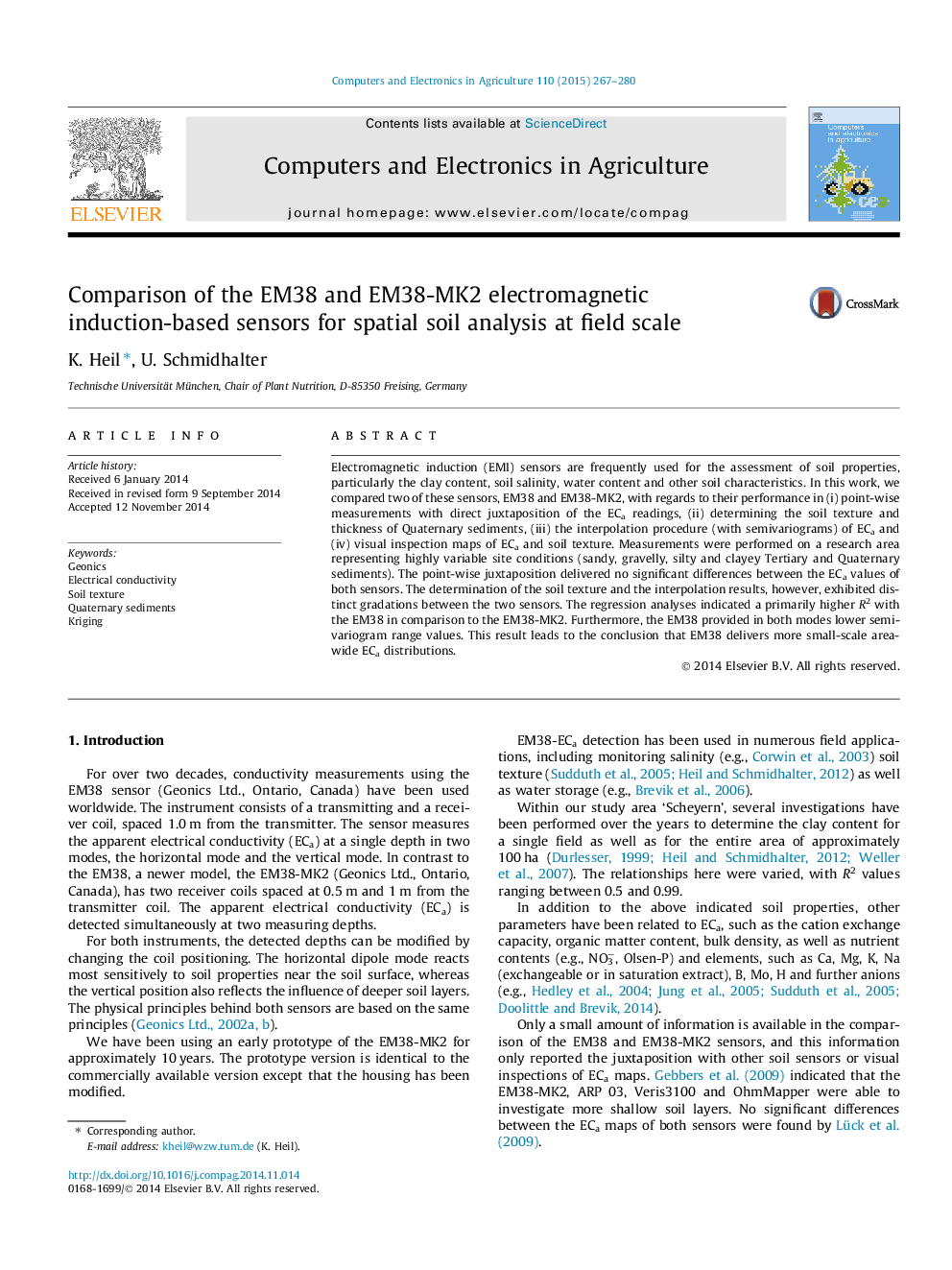| Article ID | Journal | Published Year | Pages | File Type |
|---|---|---|---|---|
| 84189 | Computers and Electronics in Agriculture | 2015 | 14 Pages |
•The soil sensors EM38 and EM38-MK2 were compared.•The point-wise comparison delivered no significant differences between the ECa readings.•The semivariogram of the EM38 provided in both modes lower range values.•This result leads to the result that EM38 delivers more small-scale area-wide ECa values.
Electromagnetic induction (EMI) sensors are frequently used for the assessment of soil properties, particularly the clay content, soil salinity, water content and other soil characteristics. In this work, we compared two of these sensors, EM38 and EM38-MK2, with regards to their performance in (i) point-wise measurements with direct juxtaposition of the ECa readings, (ii) determining the soil texture and thickness of Quaternary sediments, (iii) the interpolation procedure (with semivariograms) of ECa and (iv) visual inspection maps of ECa and soil texture. Measurements were performed on a research area representing highly variable site conditions (sandy, gravelly, silty and clayey Tertiary and Quaternary sediments). The point-wise juxtaposition delivered no significant differences between the ECa values of both sensors. The determination of the soil texture and the interpolation results, however, exhibited distinct gradations between the two sensors. The regression analyses indicated a primarily higher R2 with the EM38 in comparison to the EM38-MK2. Furthermore, the EM38 provided in both modes lower semivariogram range values. This result leads to the conclusion that EM38 delivers more small-scale area-wide ECa distributions.
